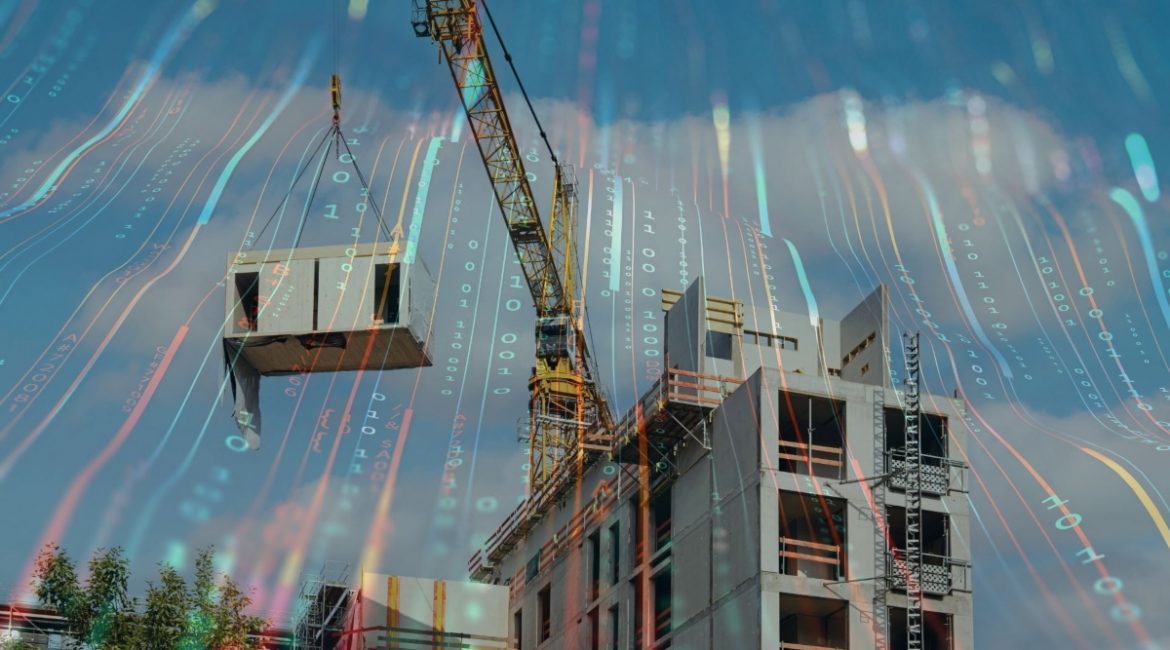The benefits of offsite construction are well touted, but where’s the hard proof? In this article, Joel Hutchines discusses how AI can give contractors the confidence they need to go modular
As industrialised construction (IC) continues to gain momentum, there are more opportunities than ever for modular building suppliers.
According to a McKinsey report, the market value for modular construction in new real-estate construction alone could reach $130 billion in Europe and the United States by 2030.
Though the future looks bright, modular construction suppliers are finding it much harder to turn this prediction into a reality, namely because it is very difficult for contractors to quantify the benefits of a modular approach.
Often suppliers preach that modular design can save time and labor that contractors would otherwise spend onsite. But they struggle to quantify these benefits, as well as the other myriad benefits that modular or offsite construction can offer.
Contractors don’t like to invest in new offerings without transparency. Without transparency, contractors can’t differentiate between suppliers who are offering legitimate products with real value versus those just offering hype.
Automatic… for the contractors
Earlier in my career, I worked at an IC company that specialised in developing bathroom pods that were mass manufactured for use in large, multi-tenant buildings.
Though the company had set up its own production line to develop the pods, they were winning contracts for projects that weren’t specifically designed for these units.
When this happened, my company had to redesign everything, both bathroom and in situ construction. While the sales teams were preaching time and labor savings to clients and prospects, all the efficiencies from manufacturing offsite got lost in the process of having to redesign, which ultimately led to no cost savings. I kept this lesson in mind years later when I founded Splash Modular.
At Splash Modular, we felt strongly that if we could automate the design process in a way that can get designers the data they need, we could avoid the problem suppliers run into with redesign costs. Through automation and the idea of a design configurator, the entire process of design was streamlined, which resulted in the designer being free to design within the realm of what was achievable.
As the supplier automatically, we could produce a variety of outputs including shop drawings, bill of materials, and machinery files — all which would eliminate the redesign work whilst ensuring the modular component was adopted much earlier in the process.
“The biggest problem for modular suppliers is accessing data and getting it to the right people at the right time”
It enabled us to move away from both preconceived and custom designs, and also avoid costly overruns with redesigns. As a result, we could focus instead on developing the process as a product, innovating on manufacturing methodologies and driving efficiencies.
The only problem we experienced was the same one that modular suppliers are running into today: accessing data and getting it to the right people at the right time.
Without this timely access, we found that it was hard for us to quantify our automated processes to skeptical architects who had been conditioned to expect a traditional “hands on” approach.
But what if suppliers could use data to help them quantify their modular offerings to contractors with full transparency? And what if this could be done while automating the entire process?
Artificial Intelligence (AI) and Machine Learning can provide an answer to these questions.
AI meets the baseline
Let’s say that the bathroom pod supplier for multi-tenant buildings no longer had to only preach quality and time savings for the offsite solution, because they already have a baseline of data they can use to compare the non-modular options, so they can see what is involved with high level of detail.
This is where AI and Machine Learning are relevant because, with the right technology platforms, they can clearly see and analyse the data they need for creating this baseline as a point of comparison.
Getting this baseline was previously not possible, because a lot of the data was “dark” and unreachable. Dark data refers to data that is stored in silos and software, scattered throughout a company’s servers (cloud or on-premises) that, when discovered and contextualised, brings value and new information that can be used to create a baseline.
When dark data is revealed, it can be anything that can help suppliers make the choices and the correct recommendations to contractors for a project build, such as building offsite or onsite, the materials and labor needed to make it happen in a timely fashion, and so on.
“Automation and better methodology can help suppliers stand out above the fray”
For argument’s sake, let’s imagine that the contractor is using the right AI tools to find this dark data, tools that are bringing in new information early in the design process.
With a baseline of both the traditional methodologies and the pod build options, the platform could make recommendations to the contractors, who could then quantify the benefits of one approach over another.
In turn, this would allow the supplier to offer these choices to a contractor with complete transparency so the contractor could see all the savings in time, labor, costs and safety, just to name a few.
For the modular world, this means that automation and better methodology can help suppliers stand out above the fray.
Modular AI = Harbinger
Without using AI and Machine Learning platforms to assist modular suppliers with data for multi-criteria decision making, it will remain impossible for these companies to fully quantify the benefits of their products and processes to contractors.
By using technology to look holistically at builds, manufacturers can produce higher quality IC while making the endeavour less risky. This leads to full transparency on the buying side and more adoption of IC industry wide.
Concurrently, the adoption of these tools is a warning to modular suppliers who aren’t keeping up with the technology because companies that continue to sell modular without fully being industrialised will remain a high-risk option.
Without a holistic view of the data and recommendations required to offer high-quality, automated modular processes, these suppliers are all smoke and no fire – which ultimately hurts all of us who call IC their home.
Image: TDUK Chief Executive Dave Hopkins (supplied)

